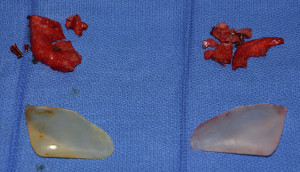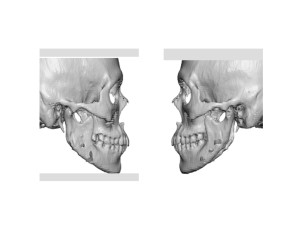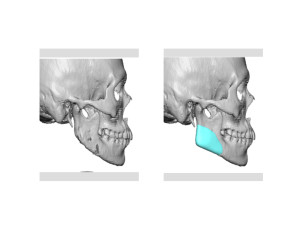Background: Jaw angle reduction is a well known surgery that is most commonly performed in Asian patients to narrow a wide lower face. The historic approach for this operation, and still one that is commonly performed, is that of an amputation technique of the jaw angle bone. By cutting off the jaw angle, the lower facial protrusion is eliminated and the lower face narrowed.
But jaw angle reduction surgery is not without its complications. Adverse aesthetic effects may develop such as overcorrection, asymmetry and loss of support of the jawline soft tissues. Patients may also develop surgical regret and wish to return to the original jaw angle shape.
Jaw angle implants would be the logical method to restore the bony anatomy from prior jaw angle reduction surgery. But standard jaw angle implants do not provide vertical jaw angle lengthening, a critical element in jaw angle restoration.


Jaw angle restoration from prior jaw angle reduction surgery is usually best done with custom made implants. This case illustrates that inadequate results are usually obtained using standard jaw angle implants. Vertical lengthening of the surgically altered jaw angles is the key to an adequate jaw angle restoration. New vertical jaw angle implants that will soon be available may work for some patients but it is hard to beat what custom jaw angle implants can do.
Highlights:
1) Jaw angle reduction surgery often amputates the jaw angles creating a vertical shortening and loss of soft tissue support.
2) Jaw angle restoration is frequently inadequate using standard jaw angle implants.
3) Custom jaw angle implants is the ideal method for jaw angle restoration after jaw angle reduction surgery.
Dr. Barry Eppley
Indianapolis, Indiana





